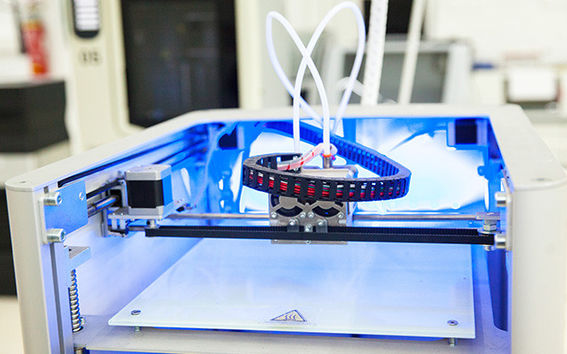The proximity of manufacturing increases the rate of R&D efficiencies

According to a recent research, companies should always manufacture technologically demanding products close to the product development. On the other hand, the more standardised the production is, the further it can be moved, even on short notice. Thus, there are more factors than just price that affect the choice of the manufacturing location; often the choice is about the interdependence of the company's operations.
‘If the proximity of the market or product development are important aspects for a company, the products are most likely manufactured in the company's home country, or at least very close to it’, estimates Postdoctoral Researcher Timo Seppälä from Aalto University and The Research Institute of the Finnish Economy, Etla.
The research analysed the choice of manufacturing location from the viewpoints of standardised methods, interdependence of operations and their proximity.
Standard products can generally be manufactured almost anywhere. Each season’s production can be auctioned to the contract manufacturer with the most affordable price.
‘Grocery stores’ own brands are good examples of consumer products that are very often produced with the auction model, and for which the price is really the only meaningful factor’, adds Seppälä.
The production models of Helkama and Ponsse
The research analysed the Finnish bicycle producer Helkama's choice of manufacturing country. The classic model Kaunotar was manufactured in the Baltic countries for a year, then the production was moved to Indonesia for a partner, with which Helkama collaborated for several years. The offered colour options or other types of demand’s fast fluctuations are not very important factors for Kaunotar, unlike for another popular Helkama model, Jopo. Therefore, the manufacturing location of the standardised product could be changed quickly.
‘About half of Helkama’s production takes place abroad. We don't invite producers for tender annually. Instead, we search for partners who meet our demands for both quality and security of supply. We manufacture special bicycles and all products in the Jopo-family domestically. This way we can flexibly react to the demand for different colour options for Jopo products with our own domestic production’, tells Satu Helkama, CEO of the Helkama Emotor Oy.
Forest machine producer Ponsse's technologies and use of digital technology are so advanced, that it is reasonable to place both the manufacturing and the product testing under the same roof in Vieremä. Therefore, Ponsse has a technological edge over its competitors. For the same reason, the company's product development cycle is also remarkably faster than that of companies which have decentralised their production. Ponsse’s centralised operations model, which is similar to Helkama’s Jopo production, keeps most of the product’s added value in Finland.
‘Many companies choose to manufacture their products in China, because everything is so affordable there. President Trump’s policy, on the other hand, aims at returning all production back to the United States. In the light of this research, however, things aren't always so simple’, contemplates Seppälä.
Etla has been responsible for the research’s data collection and the researchers have analysed it for a new purpose of use. In addition to Timo Seppälä, the researchers of the project include Petri Rouvinen and Jyrki Ali-Yrkkö from Etla, Mikko Ketokivi from the Spanish IE University and Virpi Turkulainen from the Irish University College Dublin.
Further information:
Timo Seppälä
Postdoctoral Researcher
Aalto University Department of Industrial Engineering and Etla
[email protected]
tel. +358 (0)46 851 0500
Article, Journal of Operations Management
Read more news

Get to know us: Associate Professor Maria Sammalkorpi
Sammalkorpi received her doctorate from Helsinki University of Technology 2004. After her defence, she has worked as a researcher at the Universities of Princeton, Yale and Aalto.
Aalto computer scientists in ICML 2024
Computer scientists in ICML 2024
In low-hierarchy organisations, even key policy issues are discussed in Slack
In a recent study, Aalto University alumn Lauri Pietinalho, a visiting scholar at New York University's Stern School of Business, and Frank Martela, an assistant professor at Aalto University, investigated how low-hierarchy organisations deal with shared policies in confrontational situations and how authority functions within them.